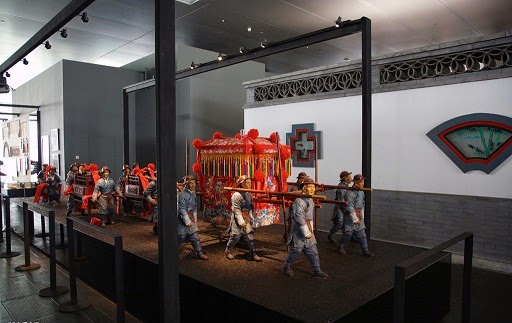798 Art Zone, or
Dashanzi Art District, is a part of Dashanzi in the Chaoyang District of
Beijing that houses a thriving artistic community, among 50-year old
decommissioned military factory buildings of unique architectural style.
The area is often
called the 798 Art District or Factory 798 although technically, Factory #798
is only one of several structures within a complex formerly known as Joint
Factory 718. The buildings are located inside alleys number 2 and 4 on Jiuxianqiao
Road(酒仙桥路), south of the Dàshānziqiáo flyover.
798 Art Zone in Beijing is always compared with Greenwich Village and SOHO
in New York Beijing Beijing
798 Space is a new
rising, avant-garde and trendy space that hosts high-level cultural, artistic
and commercial activities. Mottled red-brick wall,Scattered orderly industrial
plants, crisscross pipelines, slogans of different ages on the wall. Uniformed
workers and fashion visitors form unique scenery. History and reality, industry
and the arts perfectly fit here. The art zone can hold more than 1000 guests
with ease.
More than 100
cultural institutions including publish, architecture design, fashion design,
furniture design, music performance, film and art studios are set up here.
Besides art galleries, bars, restaurants, book stores, clothes shops and Yoga
centers could also be found in the art zone. 798 Art Zone
For more information, please visit http://top-chinatour.com
For more information, please visit http://top-chinatour.com













